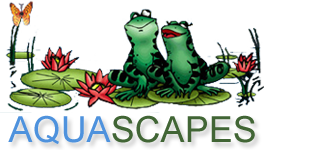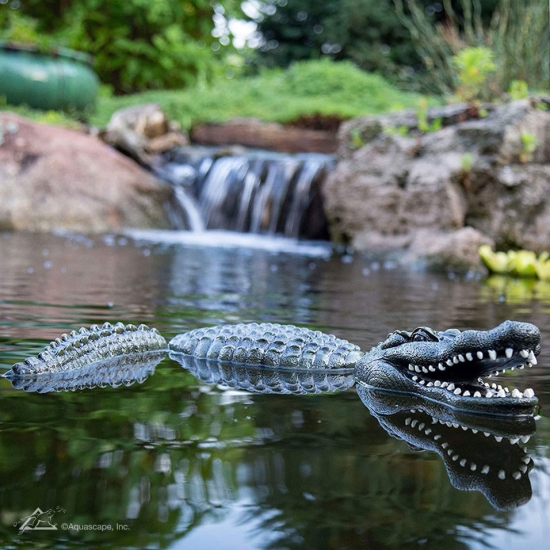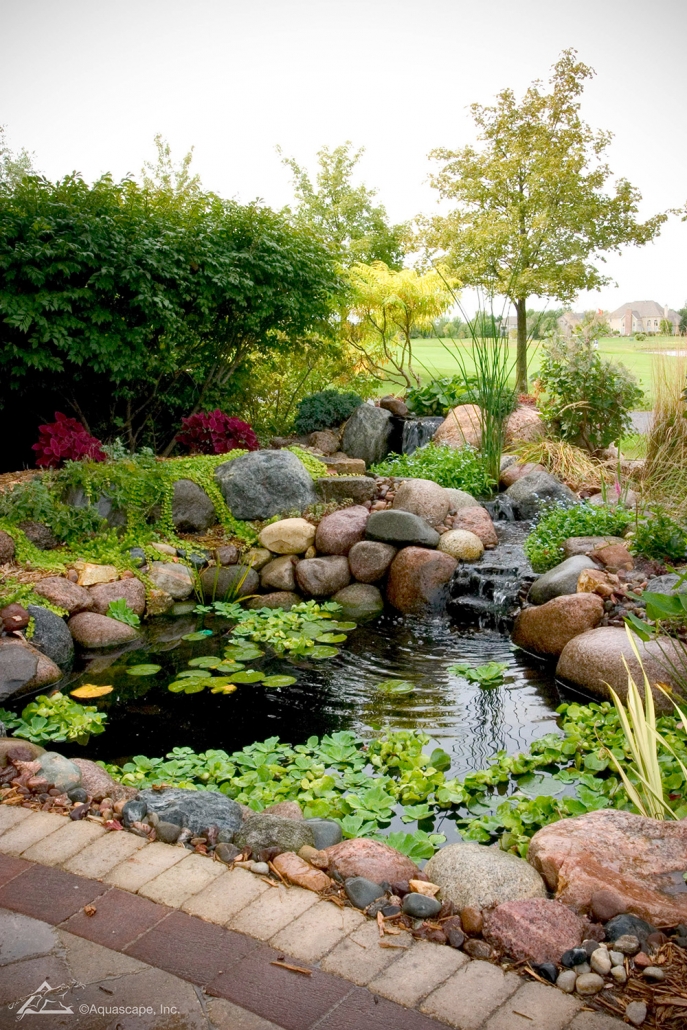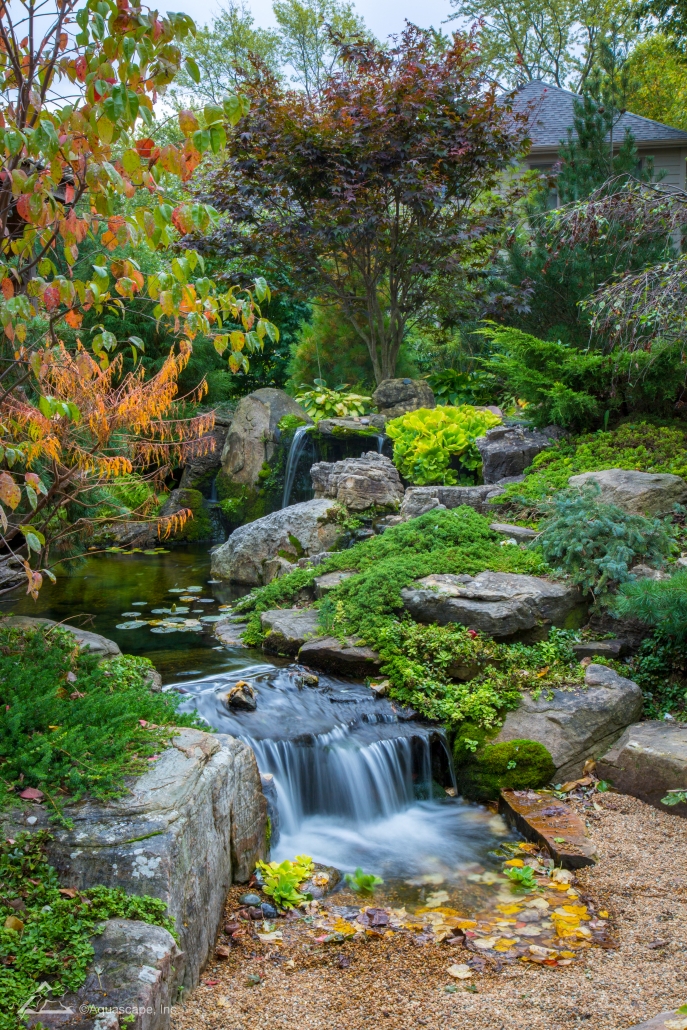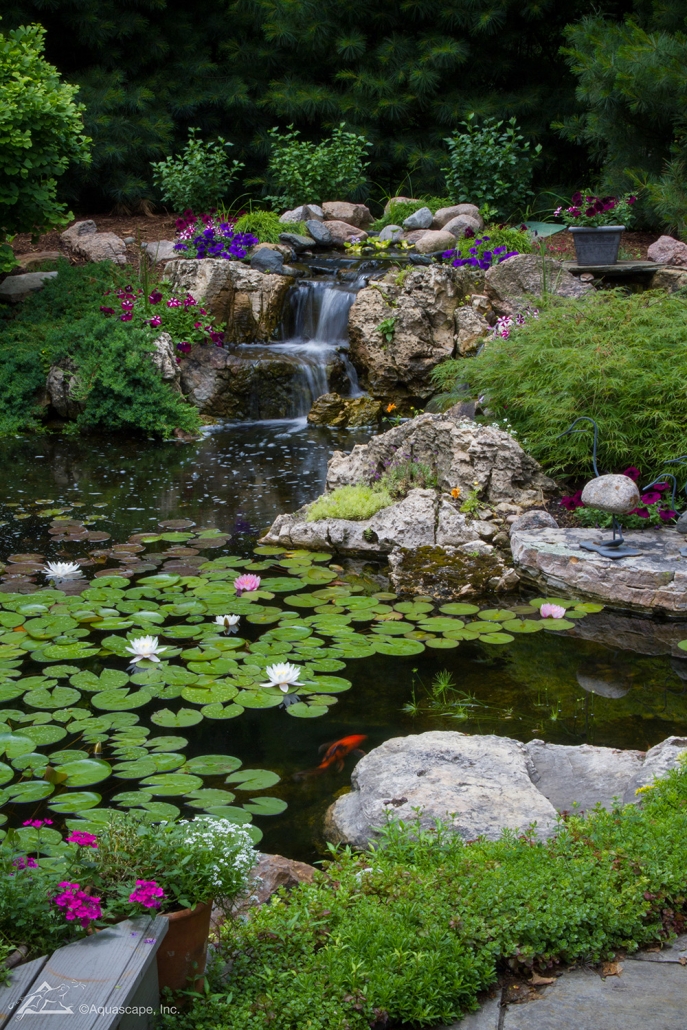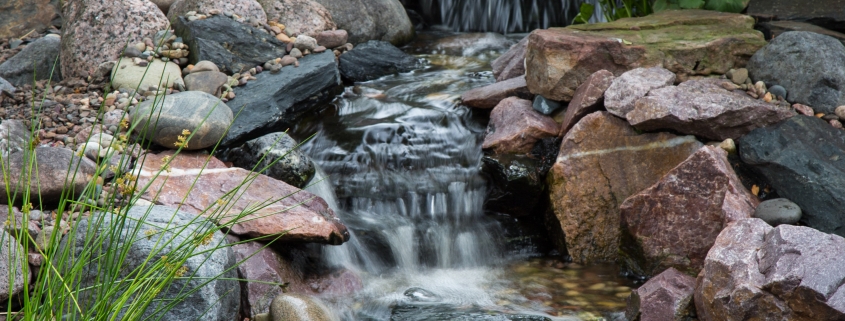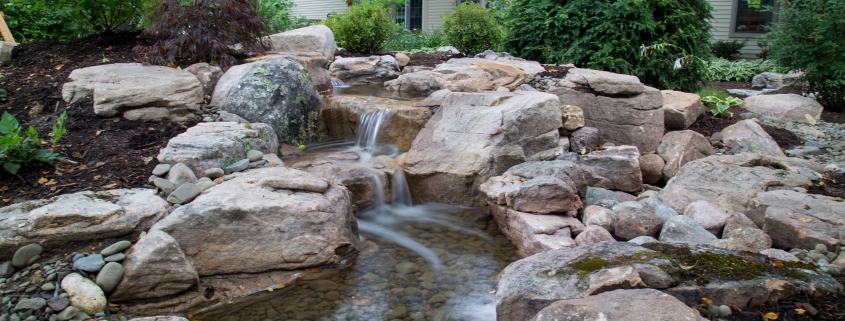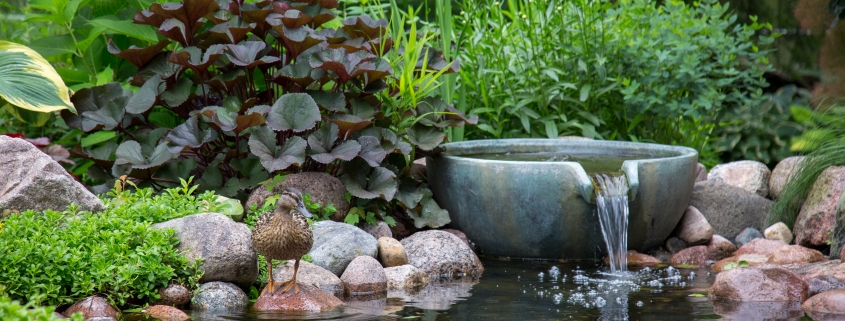How Long Does a Pond Pump Need to Be on Each Day?
A pond pump and a filter are necessary to maintain pond health. A well-maintained pond adds value to a home, and even though a large pond with fish requires more maintenance than a small pond, it is worth the extra effort, providing movement, color and a dramatic landscape element. A pond’s pump should run 24 hours each day to ensure the pond’s water circulates through the filter to keep the water clear.
Pump Function
A pond pump may be submerged in the pond’s water or sit outside the pond, depending on the pump type, but both types work in the same way. The pump uses spinning blades, known as impellers, to pull pond water through a screenlike intake and expel the water through an outlet pipe. Generally, a large pond has an external pump and a smaller pond or water garden has a submersible pump. Any kind of pump requires regular maintenance of its intake filter and screen to prevent clogging.
Pump Size
Before buying a pond pump, calculate your pond’s water capacity to determine the size of pump required to circulate all of the pond’s water through the pump every one to two hours. Formulas can help you determine your pond’s water capacity in gallons from pond measurements taken in feet. The formula for a rectangular pond is length x width x depth x 7.48 = gallons. For a circular pond, the formula is radius x radius x 3.14 x average depth x 7.48 = gallons. The formula for an irregularly shaped pond requires dividing the pond into easier-to-calculate shapes, figuring the water capacity in gallons for each of those shapes and then multiplying the total sum of those gallons by 231 instead of 7.48.
Operating Cost
A pond that has a pump or other electric equipment requires electricity, and so it will increase your monthly electric cost. Some pumps cost less to operate than other pumps. Reduce the cost of pump operation by using a pump that moves the necessary amount of pond water while using the least amount watts; a watt is a measurement of electrical usage. Calculate the cost of operating a pump by using this formula: Divide the watts by 1,000, and then multiply that figure by 24 hours, the number of days per operation and electricity cost. An example is: 300 watts/1000 x 24 hours x 30 days x 0.08 for electricity cost = $17.28 as the cost to run the pump for 30 days.
Other Considerations
Mosquitoes can be a problem when a pond is in the landscape, but mosquitoes lay eggs in only stagnant water. A pump can keep the pond water moving, deterring mosquitoes from laying eggs in the water. Even a small amount of moving water can prevent mosquitoes from laying eggs. So if a pump is not feasible, add a fountain bubbler to keep water moving.
How Many Watts Would a 2.5 HP Pump Use?
A pump helps circulate and filter the water in a pool. A pump’s horsepower determines how quickly the pump can process all the water. The goal is for the pump to sufficiently filter all the water in an 8 to 10 hour period, according to Aquascapes. Depending on the size and volume of your pool, you will need more or less horsepower to filter the water in that ideal time frame. Horsepower can be converted to watts, giving you a guesstimate of what your energy costs might be to run your pump.
Math Conversions
One horsepower is equal to 745.7 watts. When you multiply 745.7 watts by 2.5 hp, you get 1,864.25 watts. Energy costs are calculated in kilowatt-hours, and to get kilowatt-hours, you multiply watts by hours and divide by 1,000. So, if you run your pool pump for 8 hours in one day, 1,864.25 multiplied by 8 and divided by 1,000 equals 14.9 kilowatt-hours. If you run your pump every day for an average of 30 days per month — 30 multiplied by 14.9 — your pump uses 447 kilowatt-hours in a month.
Selecting a Correct Pump For Your Garden Water Features
Water pumps are one of the most crucial features of the garden pond. Although a static garden pond pump isn’t an absolute necessity, a pump is required when we install a fountain, waterfall, and filter. A water pump helps to keep the circulation of water. Water circulation helps to keep the fish and plants healthy. Water circulation helps in the prevention of algae build-up, breeding of mosquitoes, and stagnation of water. Water circulation also helps in the proper distribution of oxygen levels throughout the garden pond system.
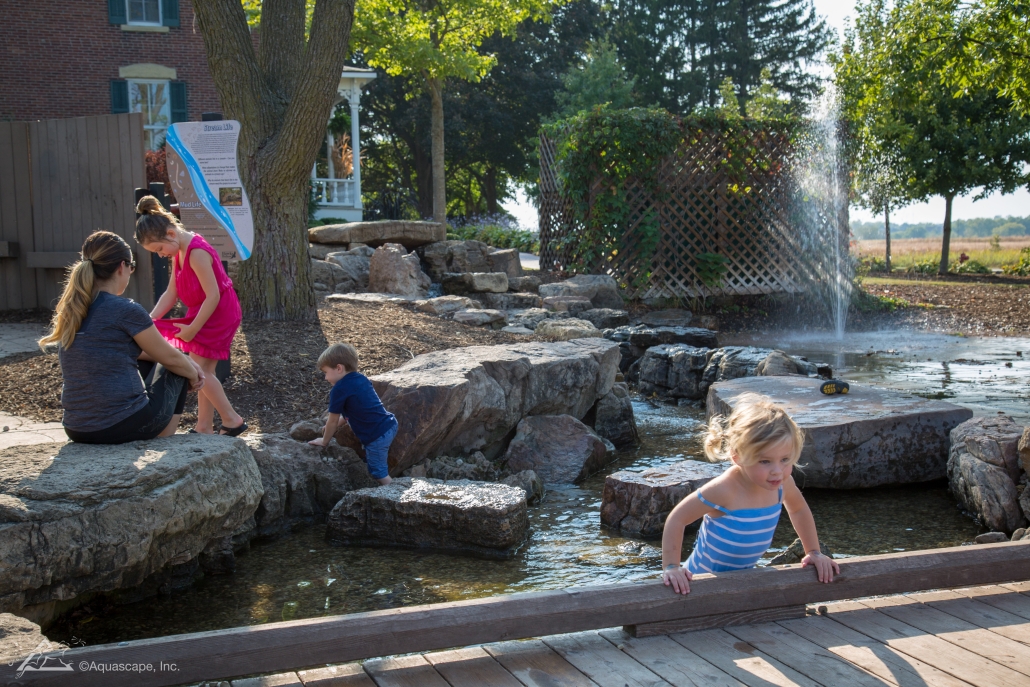
Choosing the correct pump can be difficult, but it doesn’t have to be!
For a heavy waterfall flow, you’ll want to use about 2,000gph per single foot of waterfall discharge. If you would like a lighter waterfall flow, use about 1,000gph per foot of waterfall discharge.
Take note of your tubing from the pump to the waterfall. If its greater than 10′ then we recommend to add about 1 foot of head for every 10′ of tubing.
First you will want to determine the head pressure. Head is the same as the total number of feet from the top of the waterfall to the top of the water’s surface.
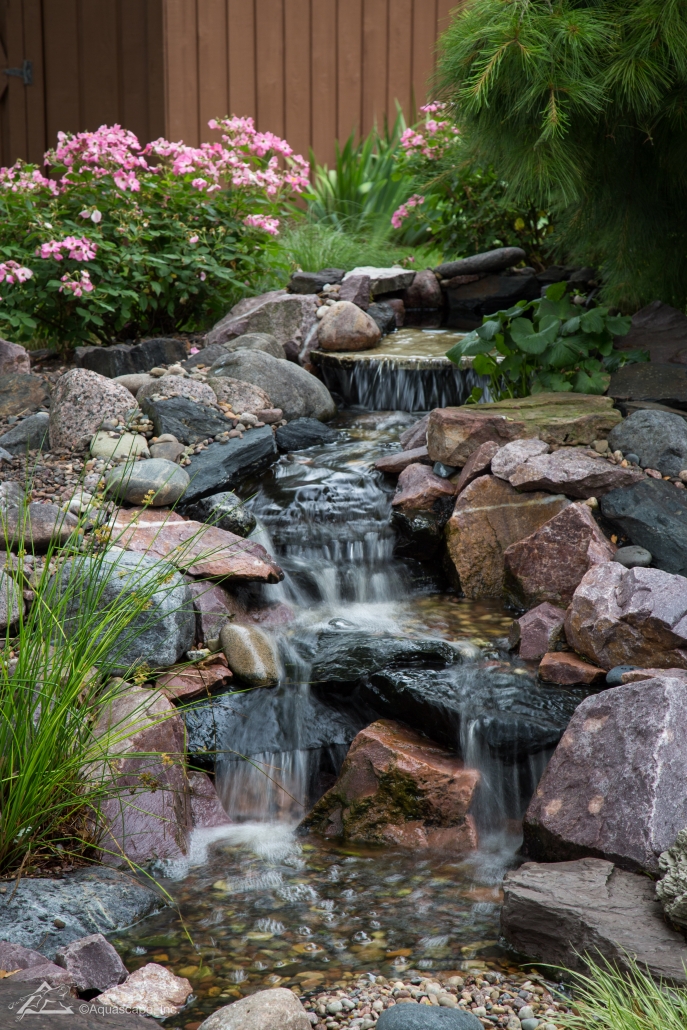
Second, you’ll want to determine the desired water flow. How much water do you want moving over the waterfall per hour? Usually you’ll want about 1,500 gallons of water per hour (GPH) for every 1 foot of waterfall discharge. This is just the average though, you may want more. For instance, if your waterfall is 2′ you’ll want a 3000gph pump.
Lastly, in this example the head pressure is 5′ and the estimated pump needed is 3000gph. Noting this information, we find out that we will need a pump that is 3000gph at 5′ of head.
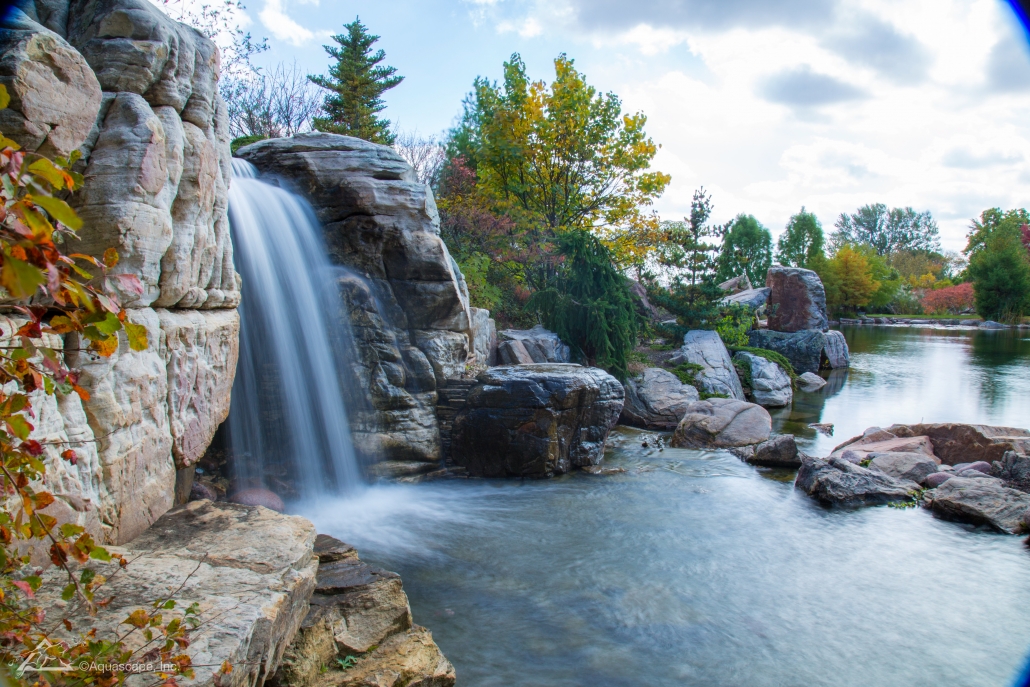
Aquascape pond pumps can be tricky if you’re uncertain what you need. The simplest solution is to give us a call and ask what size you need for your water garden, but beyond that, take a look at a pump calculator to see which one you need. Simply add in the values for your water garden and you’ll be able to find out exactly which pond pump you need.
Pondless Waterfall Building
What is a Pondless Waterfall? Well, a Pondless waterfall is a water garden that has a waterfall, but no attached pond. Notice in the picture how the water drains through the pebbles? The water is then pumped to the top of the waterfall to begin the cycle anew. In this article we will take a look at various waterfall design ideas and provide insight into installing your very own DIY waterfall!
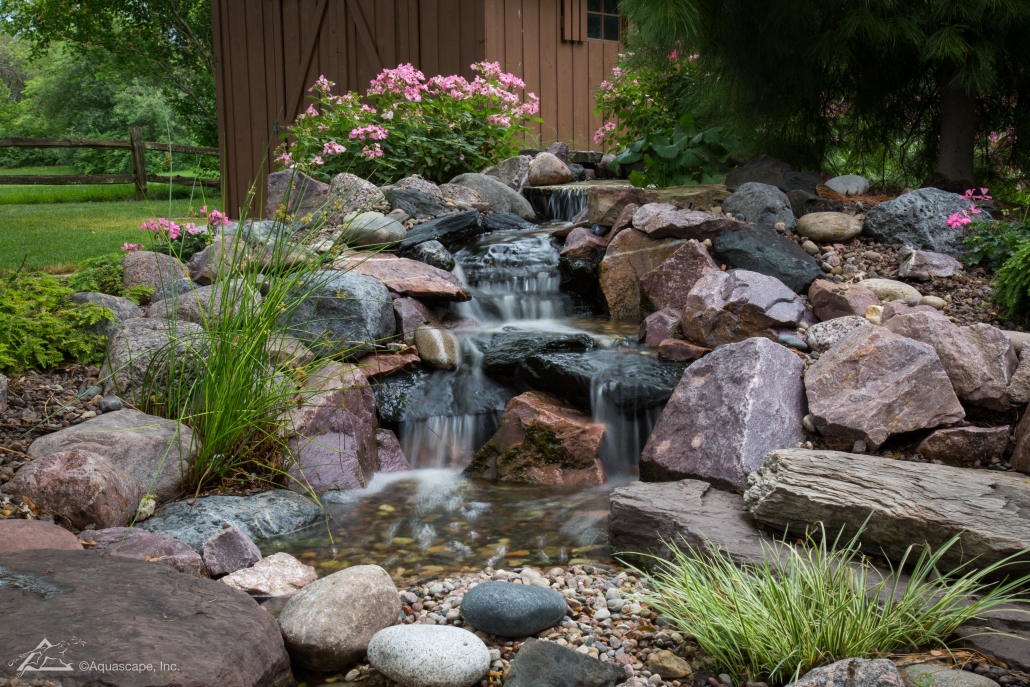
Our experts love to design and install pondless designs. You can have multiple options with one stream or many streams attached to a water feature. It might sound overwhelming, but that’s why we’re here! We love to help design and install pondless water features.
Always ensure that you have enough space to install a water feature along with its associated pumps and other garden water features machinery when you install waterfall on your own. Also leave sufficient space around the waterfall for adding rocks, pebbles, water plants and other complimentary features which will add beauty to your waterfall.

The Pondless Waterfall
Sometimes adding in several waterfalls in a single line down your property will be the best option. When this is the case, we like to recommend small rock bridges for passing over top! This can also help you get an up-close view of your waterfall, perhaps even close enough for a bit of water spray…
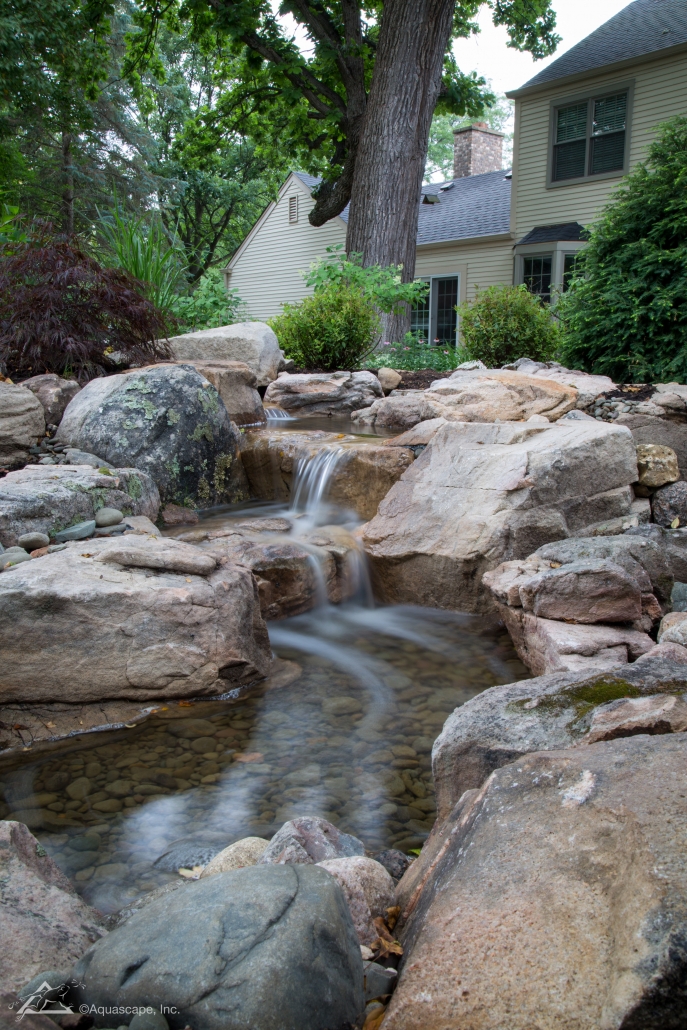
Sometimes large rocks can be the perfect way to create your backyard paradise. Notice the several large boulders hanging over the waterfall!
Our Pondless Waterfall Kit was simple to install and setup. Notice the colored pebbles surrounding the feature and the added flowers complimenting the design.
If you’re ready to get started, we have four waterfall kits to choose from! Give us a call if you have any questions.
- Aquascape DIY Backyard Waterfall Kit
- Aquascape® Large Pondless Waterfall Kit 26′ Stream
- Aquascape Medium Pondless® Waterfall Kit 16′ Stream
- Aquascape Small Pondless® Waterfall Kit 6′ Stream
Check out our store for all your water gardening needs! Aquascape products are Aquascape Inc. Certified.
Solar Powered Water Features for the Garden
Nothing can complement water more than a lovely beautiful sunlight. Water along with sunlight is what really makes up a beautiful summer day. Ancient water features were powered using gravitational forces, human power or animals to pump in the water. Since the 18th century, the majority of water features have been powered by pumps. In the modern garden features the source of power is almost always electricity. As more and more people become aware of alternate installation methods, there is an increasing range of innovative designs in market running on alterante sources of energy like solar power. The advantages of using solar power include environmental benefits, no electrical lines in the garden, and free energy.
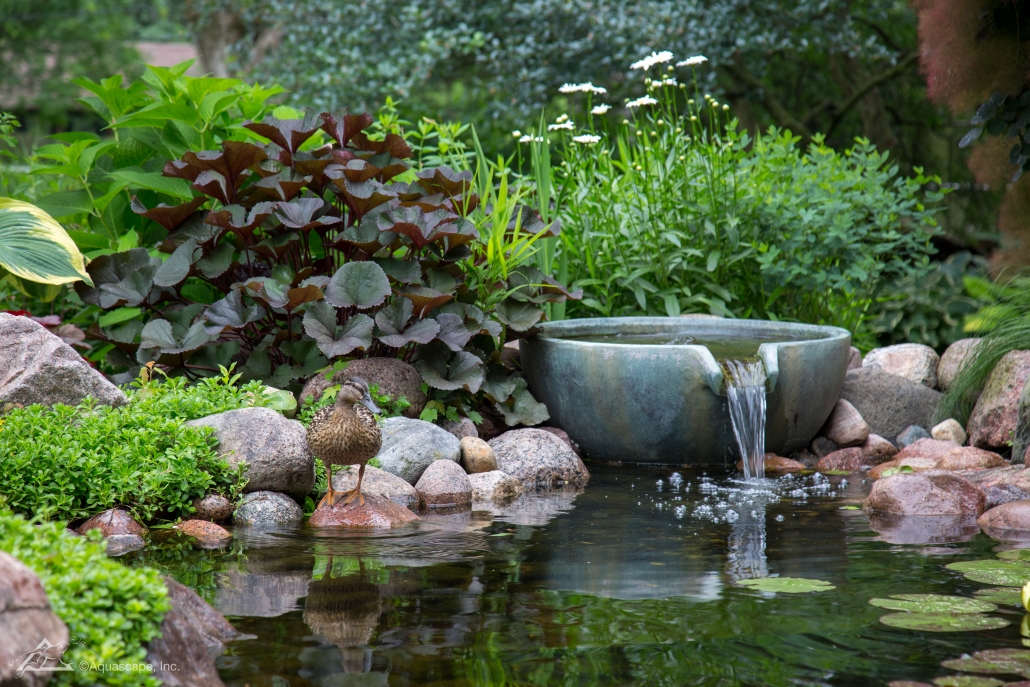
Solar water features combine the beauty of sunlight and water by using the sun to run their submersible pumps, which send water tumbling downward to the basin and back up to the top again. The same natural looking resilient materials used to make other regular fountains are used to build these solar powered water features, however, these water come without the ugly looking cables. One of the biggest advantages of using solar powered water features is there is no cost on electricity as sun being a natural resource. A Solar with Battery Backup fountain even includes a battery to save up energy for nights and cloudy days.

Solar water features free from the electrical cords present a great amount of flexibility in regards to their placement in garden as they are no longer limited due to constraints of wires and cables. These solar powered water features help you in making your little bit of contribution towards the environment. With solar powered water features in your backyard garden your outdoor space will truly be one with nature.

Solar water features provide beautiful additions to any landscaping or garden. With great flexibility offered by solar water features, you can customize the placement of water features in many ways. You can choose from a plethora of water features such as solar powered fountains, waterfalls, lightning. All of these run on pure solar energy thanks to solar panels and help to add beauty to your garden.
